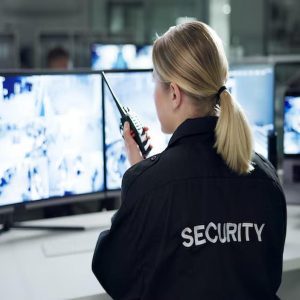A successful trade show booth is more than just a physical presence; it’s a strategic marketing tool. To make the most of your trade show participation, you need to ensure that your booth has all the essential elements in place. In this article, we’ll delve into the key components that make up a successful trade show booth.
Trade shows provide a unique opportunity to connect with potential customers, showcase your products or services, and leave a lasting impression. However, to stand out in a sea of booths, it’s essential to pay careful attention to the following trade show booth essentials.
Engaging Displays
Displays are the visual centerpiece of your trade show booth. They should not only capture attention but also effectively convey your brand message and offerings.
High-Quality Graphics: Crisp, high-resolution graphics are non-negotiable. Your graphics should be visually appealing and aligned with your brand’s identity. Vibrant colors and compelling imagery can help your booth stand out.
Product Displays: If you have physical products to showcase, consider using well-lit product displays. These allow attendees to interact with your offerings and get a tactile sense of their quality.
Interactive Screens: Incorporating interactive screens or touch displays can engage attendees and provide them with valuable information about your products or services. Interactive elements can also collect visitor data for follow-up.
Thoughtful Layout
The layout of your trade show booth plays a significant role in attendee engagement. An effective layout should encourage traffic flow and create opportunities for meaningful interactions.
Open Layout: Avoid clutter and barriers that can make your booth feel cramped. An open layout allows attendees to move freely and explore your booth without feeling confined.
Traffic Flow: Design your booth in a way that guides attendees through a logical path. Place important displays and engagement points strategically to maximize visibility and interaction.
Meeting Spaces: If possible, include semi-private meeting spaces within your booth for one-on-one conversations with potential clients or partners.
Impactful Lighting
Lighting can make or break the overall ambiance of your trade show booth. It sets the mood, highlights key elements, and draws attention to your displays.
Even Illumination: Ensure that your booth is evenly lit to avoid harsh shadows or dark corners. Welldistributed lighting creates a welcoming atmosphere.
Spotlighting: Use spotlights or directed lighting to accentuate specific areas or products within your booth. These focused beams can draw attention to your key offerings.
Color Temperature: Pay attention to the color temperature of your lighting. Warm lighting can create a cozy atmosphere, while cooler lighting may convey a more modern and professional feel.
Branding Elements
Your booth should serve as a visual representation of your brand. Consistent branding elements help attendees recognize and remember your company.
Logo Placement: Your logo should be prominently displayed, ensuring that it’s easily visible from a distance. Consider using custom banners or signage to feature your logo.
Color Scheme: Maintain a consistent color scheme throughout your booth, aligning it with your brand’s colors. Cohesive colors create a polished and professional look.
Branded Materials: Utilize branded materials such as table covers, banners, and promotional items to reinforce your brand identity.
Engaging Staff
Your booth staff are the face of your company during the trade show. They should be knowledgeable, approachable, and proactive in engaging with attendees.
Training: Prioritize staff training to ensure they are well-informed about your products or services and can answer attendees’ questions effectively.
Engagement: Encourage your staff to actively engage with attendees. A friendly smile, a warm greeting, and a willingness to initiate conversations can go a long way.
Lead Capture: Equip your staff with digital lead capture tools, such as tablets or smartphones, to efficiently collect attendee information for follow-up.
Follow-Up Strategy
A successful trade show booth isn’t just about what happens at the event; it’s also about what happens afterward.
Lead Nurturing: Develop a lead nurturing strategy to maintain contact with attendees after the trade show. Provide valuable content, such as whitepapers or webinars, to keep them engaged.
Prompt Follow-Up: Follow up with leads promptly, ideally within 24-48 hours of the event. Personalized follow-up emails can make a significant impact.
Conclusion
Creating an inviting and engaging trade show booth involves careful consideration of design, layout, lighting, and staffing. These key components work together to create a booth that not only attracts attention but also effectively communicates your brand message and engages attendees.
To learn more about essential booth elements, including advanced lighting techniques, consider visiting Godfrey Group’s Custom Page.
Additionally, for further insights and information on trade shows and booth essentials, you can explore TradeShow News Network and Exhibitor Magazine.
Remember, your trade show booth is a reflection of your brand’s professionalism and commitment to excellence. By paying attention to these essentials, you can make the most of your trade show participation and leave a lasting impression on attendees.





